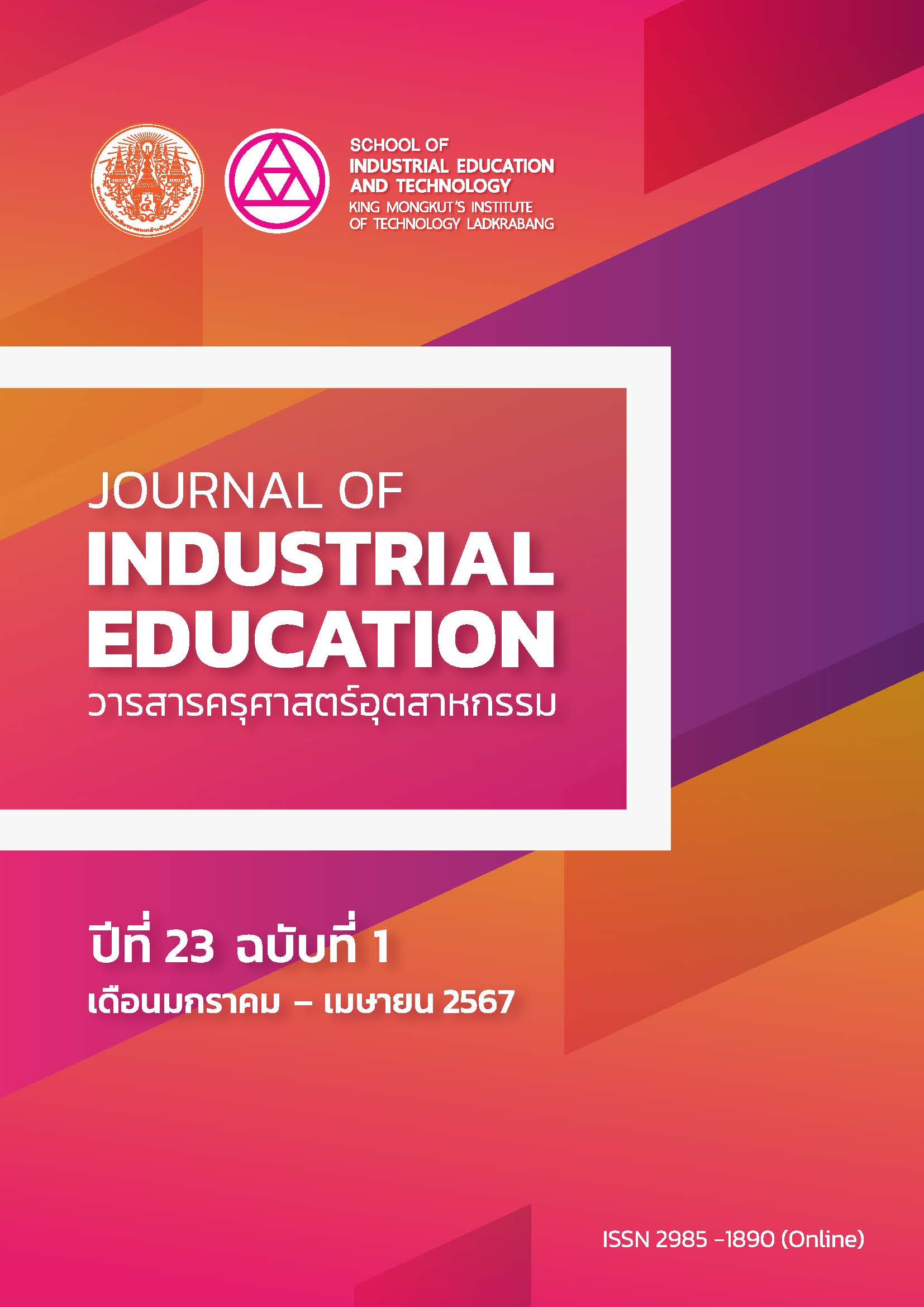DESIGN GUIDANCE OF MICROLEARNING MEDIA
DOI:
https://doi.org/10.55003/JIE.23103Keywords:
Design guidelines, Educational media, MicrolearningAbstract
The advanced development of digital technology causes rapid changes in several technologies. Traditional learning models may need to be revised to respond or adapt to these changes. Studying, working, or the career which we do today must be prompted to learn, and know how to adapt to rapidly changing situations. Micro-Learning is a learning model that has specific, clear, concise, and uncomplicated structures. By this learning model, learners spend a brief time attending. Currently, it is found that the microlearning model has been widely applied to learning topics. It facilitates learners to learn and has a continuous effect, so students learn more determinedly by not learning too much content. Moreover, nowadays, computer technology and software are used to convey meaning by combining various types of media such as text, graphics, animation, audio, video, and so on. The aforementioned media have been studied and researched to arouse interest and increase learning efficiency. Varieties of learning resources are available online to provide learning opportunities for all genders and ages. They can learn by themselves and acquire the knowledge easily so that learners can apply it in life or in real work in time. They can manage their own times and channels of learning independently. The key factor of microlearning media is noteworthy to reduce place and time constraints. The design of microlearning media therefore requires consideration of the type of media that is appropriate to the specific situation and needs of the learner. Designers need to know how to micro learn that some lessons cannot be micro learned if the content is large or in-depth. The media should be designed to respond to the content of that topic.
References
Betrancourt, M., & Chassot, A. (2008). Making sense of animation: How do children explore multimedia instruction. In R. Lowe & W. Schnotz (Eds.), Learning with animation: Research implications for design (pp. 141-164). Cambridge University Press.
Boonmapan, S. (2021). The development of microlearning lessons on social networks based on the constructivist approach to promote the analytical thinking of Matthayom Sueksa 6 Students. ECT Journal (Education and Communication Technology Journal), 16(21), 65-78. (in Thai)
Deloitte. (2014). Big demands and high expectations: The Deloitte Millennial Survey.
http://www2.deloitte.com/content/dam/Deloitte/global/Documents/About-Deloitte/gx-dttl-2014-millennial- survey-report.pdf.
Digital Economy Promotion Agency. (2022). The biggest opportunities and challenges in driving the digital Economy of gen Z. https://www.depa.or.th/th/article-view/article4-2563
Digmandarin. (n.d.). Your guide to the Chinese learning jungle. https://www.digmandarin.com/
Ebbinghaus, H. (1949). Experiments in memory. In W. Dennis (Ed.), Readings in general psychology (pp. 225-230). Prentice Hall.
Electronic Transactions Development Agency. (2022). Thailand internet user behavior 2022.
https://www.etda.or.th/getattachment/78750426-4a58-4c36-85d3-d1c11c3db1f3/IUB-65-Final.pdf.aspx
Grevtseva, Y., Willems, J., & Adachi, C. (2017). Social media as a tool for microlearning in the context of higher education). In A. Skarzauskiene, & N. Gudeliene (Eds.), Proceedings of the 4th European Conference on social media (ECSM 2017) (pp. 131-139). Academic Conferences and Publishing International.
Hug, T. (2006). Microlearning: A new pedagogical challenge (Introductory Note). In T. Hug, M. Lindner, & P. A. Bruck (Eds.), Microlearning: Emerging concepts, Practices and Technologies After E-Learning: proceedings of Microlearning: Learning & Working in New Media (pp. 8-11). Innsbruck University Press.
Hug, T., & Friesen, N. (2007). Outline of a microlearning agenda. In T. Hug (Ed.), Didactics of microlearning: Concepts, discourses and examples (pp. 15-31). Waxmann Verlag.
Insaard, S. (2021). Microlearning design of the digital age. ECT Journal (Education and Communication Technology Journal), 16(20), 16-31. (in Thai)
Karpicke, J. D., & Roedige, H. L., III. (2007). Repeated retrieval during learning is the key to long-term retention. Journal of memory and language, 57(2), 151-162.
Khan, B. H. (2009). The global e-Learning framework. In S. Mishra (Ed.), Stride Handbooik 08: E-Learning (Chapter 5; pp. 42-51). Indira Gandhi National Opern University.
Kulhanek, B., & Mandato, K.. (Eds.). (2022). Healthcare technology training: An evidence-based guide for improved quality. Springer Nature.
PacRim Group. (2021). PacRim micro learning. https://www.youtube.com/watch?v=Zvo1qmpIpgM
PdfFilter. (n.d.). PdfFilter and functionality. https://www.pdffiller.com/en/functionality/
TikTok. (n.d.). Technic for put your Fonts. https://www.tiktok.com/@snname_199
Downloads
Published
Versions
- 2025-04-04 (2)
- 2024-04-30 (1)
How to Cite
Issue
Section
License
Copyright (c) 2024 Journal of Industrial Education

This work is licensed under a Creative Commons Attribution-NonCommercial-NoDerivatives 4.0 International License.
"The opinions and contents including the words in papers are responsibility by the authors."
"ข้อคิดเห็น เนื้อหา รวมทั้งการใช้ภาษาในบทความถือเป็นความรับผิดชอบของผู้เขียน"



